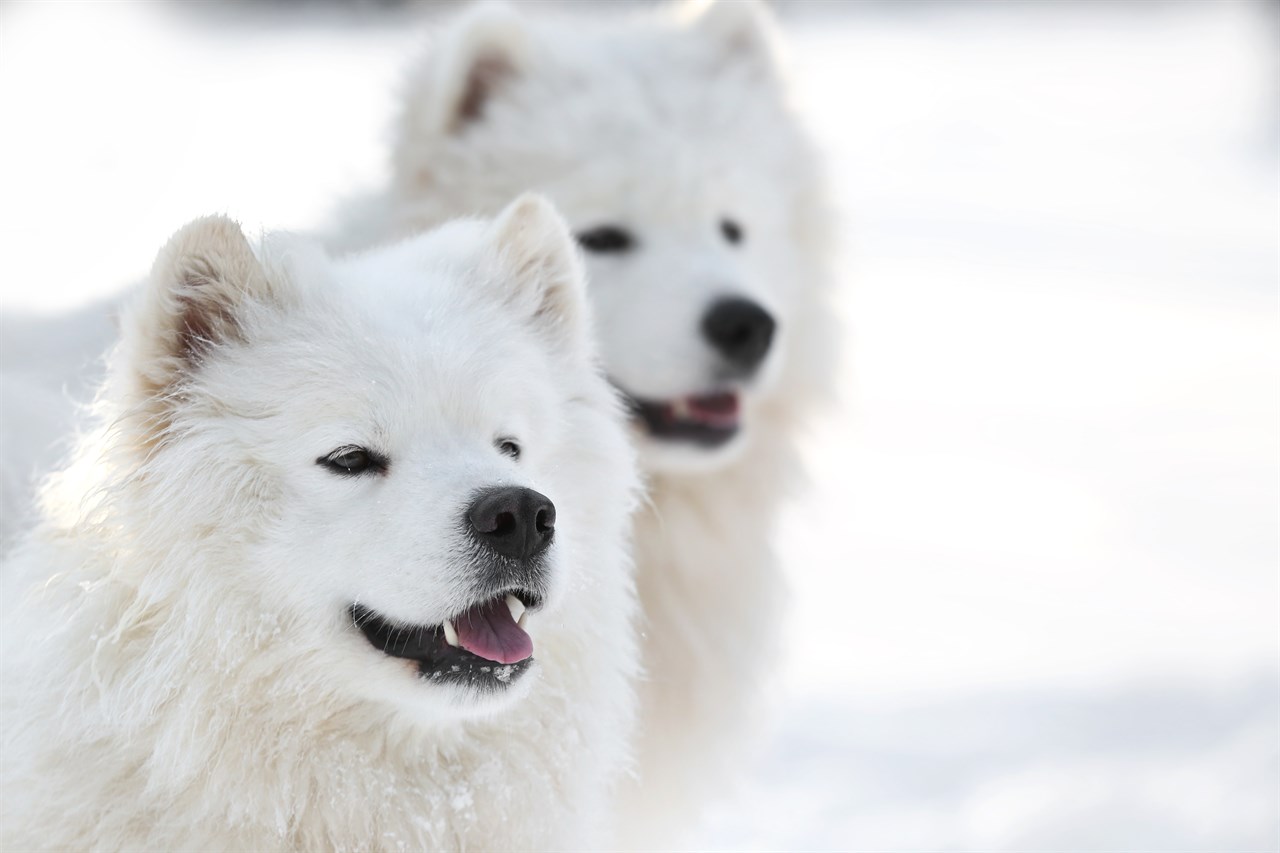Samoyed: The Fluffy Charm of the Arctic

In the world of dog breeds, there are few as captivating as the Samoyed. Often referred to as "Smiling Sammies," these dogs are known for their bright personalities and striking appearance. With their fluffy white coat, perpetually upturned corners of the mouth, and unwavering loyalty, Samoyeds have captured the hearts of dog enthusiasts worldwide. In this comprehensive exploration, we'll delve into the rich history, unique characteristics, and frequently asked questions about this delightful breed.
Breed History
Origins
The Samoyed breed traces its roots to the Arctic, specifically to the nomadic Samoyedic people of Siberia, from whom it takes its name. These indigenous people, who inhabited the harsh and frigid terrain, relied heavily on their canine companions for survival. Samoyeds played a pivotal role in herding reindeer, pulling sleds, and providing warmth in the unforgiving Arctic winters.
Evolution
Over time, the Samoyed breed developed distinctive characteristics that made them ideally suited for their demanding lifestyle. They evolved to be adaptable, friendly, and hardworking, traits that remain ingrained in the breed today. This evolution was driven not only by the harsh environment but also by selective breeding practises.
Exportation to Europe
The breed's introduction to the western world can be attributed to the late 19th century when explorers and traders brought Samoyeds back to Europe. The breed quickly gained popularity among European aristocracy and became a status symbol. This exportation also marked the beginning of breeding standards and the establishment of the breed in various kennel clubs.
Also Known As
The Samoyed is also known as the Sammie Smile or Smiley Dog.
Breed Group and Size
Samoyeds belong to the Working Group, a classification in the American Kennel Club (AKC) and other major kennel clubs. As part of this group, they share their category with other breeds like Siberian Huskies, Alaskan Malamutes, and Bernese Mountain Dogs. This classification emphasises their historical roles as working dogs, as well as their strong and sturdy build.
In terms of size, adult Samoyeds typically stand between 48 to 60 cm at the shoulder. They usually weigh between 16 to 29 kg, with males being larger than females.
Breed Coat, Colour, and Appearance
Coat
One of the most distinctive features of the Samoyed is its luxurious double coat. This coat consists of a dense, soft undercoat for insulation and a straight, harsh outer coat that helps protect them from the elements. Their fur is often described as "plush," giving them a cloud-like appearance.
Colour
Samoyeds are renowned for their pristine white coat, which stands out brilliantly against their dark eyes and black nose. While all-white Samoyeds are the most common, some may exhibit biscuit or cream-coloured markings on their ears and face. These markings are known as "biscuit" or "cream" and add a touch of elegance to their appearance.
Appearance
Beyond their coat, Samoyeds have a friendly and alert expression, with almond-shaped eyes that convey intelligence and warmth. Their ears are thick and upright, while their tail curls over their back, often touching their hips. When at ease, their tails may fall to the side, but the characteristic "Sami smile" never seems to fade.
Frequently Asked Questions
Is a Samoyed or Husky bigger?
Samoyeds and Siberian Huskies share some similarities, but they differ in size. Samoyeds are generally larger than Siberian Huskies. While Samoyeds stand at 48 to 60 cm and weigh 16 to 29 kg, Huskies are typically smaller, with a height of 51 cm to 60 cm and a weight ranging from 16 to 27 kg. So, in terms of size, Samoyeds have the edge.
Is an Alaskan Malamute bigger than a Samoyed?
Yes, the Alaskan Malamute is bigger than a Samoyed. Alaskan Malamutes are one of the largest and most powerful breeds among sled dogs. They stand at 58 to 64 cm tall at the shoulder and can weigh anywhere from 34 to 45 kg or even more. In comparison, Samoyeds are smaller in stature and weight, making Alaskan Malamutes the larger of the two breeds.
Can you keep a Samoyed in Australia?
Yes, you can keep a Samoyed in Australia, but there are some considerations to keep in mind. Like many countries, Australia has strict quarantine and importation regulations for dogs to prevent the introduction of diseases. To bring a Samoyed into Australia, you would need to adhere to these regulations, which typically include vaccinations, microchipping, and a period of quarantine upon arrival. It's essential to research and comply with all Australian government requirements and regulations for importing dogs.
Conclusion
The Samoyed breed is a testament to the enduring bond between humans and dogs. With their captivating appearance, rich history, and remarkable personality, Samoyeds continue to be cherished companions in modern society. Whether they're pulling sleds through the Arctic tundra or playfully frolicking in the backyard, Samoyeds embody the enduring spirit of the working dog. Their bright eyes, fluffy coats, and "Sami smiles" serve as a reminder of the joy and warmth that these remarkable dogs bring into our lives.
Continue reading our Samoyed in-depth articles
- Samoyed Temperament and Behaviour
- Samoyed Training and Socialisation
- Samoyed Toilet Training
- Samoyed Barking Habits
- Samoyed Grooming Requirements
- Samoyed Shedding Behaviour
- Samoyed Sleeping Behaviour
- Samoyed Diet and Feeding Requirements
- Samoyed Average Lifespan
- Samoyed Exercise Requirements
- Samoyed Common Health Issues
- Samoyed Suitability Guide
- Samoyed Advantages
- Samoyed Disadvantages
- Samoyed Cost to Buy and Own
- Samoyed Clubs and Links
- Selling Samoyed Puppy Litters and Dogs
- Buying Samoyed Puppies and Dogs
- Samoyed Alternatives